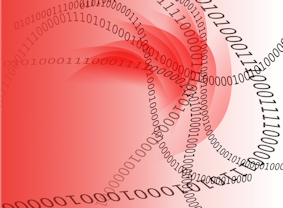Losing everything just one time instantly makes you an evangelist for backing up your software systems. For me, it was my senior year of college at 6:00am. I was programming at night for an insurance company on a dual 5.25” floppy computer. In an instant, 3 weeks’ worth of work was gone. The only thing I had left was a 50-page printout of the program from the day before. So I started typing….
I was lucky that I learned the lesson early in my career. Over the years, backups have saved me and the organizations I worked for many times.
As computer hardware and software systems have become more reliable over the years, the number of catastrophic failures from breakdowns seems to have dwindled leaving some people with a false sense of security. After all, if you’ve never lost everything, you probably don’t think much about the consequences if it were to happen to you.
When I visit with small business leaders about their data systems, it’s not uncommon to hear these types of comments when we talk about backups:
- “I’m sure we have a backup here somewhere.”
- “Yes! We did a backup three months ago!”
- “Backup?”
I’ve been called for advice and help many times when everything is lost. If the last backup was two weeks ago, the only option is to restore and then manually make two weeks’ worth of changes. Their faces always fall when you tell them that….but it’s not as bad as if they had no backup at all.
It’s pretty easy these days to get some accounting software, some customer management software, email software, and whatever else you need to run your company. They all come with installation instructions and can be up and running in a couple of hours. They also probably come with a caution to back up your data. Often, that caution is a single, small paragraph buried somewhere in the online help or user guide.
Small business leaders are jacks-of-all-trades. They’re busy managing, selling, doing the work, doing the books at night, and whatever else needs to be done. What’s your plan if you lose all of your data? If you don’t have a backup strategy and you lose it all, your hectic life just got impossible while you try to rebuild your data.
But today, there are some really affordable backup strategies that you can easily deploy to protect your organization. Even if you’re not a computer science major or an I/T manager, here are some steps you can take to reduce your vulnerability to a catastrophic loss.
Buy Cheap Storage
It’s amazing how cheap external storage devices have become. As of the day I’m writing this, it’s very easy to find 500GB external drives for less than $50.00. They almost all connect via USB making them easy to swap in and out and perfect for data backup devices. I suggest having 2 or 3 of these devices with each one large enough to hold all of your data.
Don’t Backup Programs
If your programs came on installation CD’s, don’t back them up. You can always reinstall the programs from the original installation CD’s. If you downloaded your software to install it, backup the installation program one time – you don’t need to back it up over and over. Also, be sure to store your installation keys or serial numbers some place where you can easily find them. If you don’t need to backup your programs every night, your backups will run faster and you won’t need as much storage.
Centralize Your Data
If you have ten computer users in your organization and everyone stores their data and documents on their own computer, you’re going to have to backup each computer. That can become a real nuisance – especially if your organization is growing. Store all of your organizational data in a central place and back it up all at one time.
Don’t Forget Remote Users
More and more organizations employ remote workers – people who work from their homes far away from the main office. Those people are generating data as well. Perhaps they are doing it by accessing applications – your CRM or finance system – via the Internet. But more than likely, they are creating documents, proposals, videos, etc. for your organization and storing it on their local devices. Don’t forget about their data in your backup plan. Just because it’s far away doesn’t mean it isn’t critical to your organization.
Backup Hosted Data
More and more business software solutions are being hosted remotely by vendors. CRM, finance, marketing, and other systems are located somewhere else and you access them via an Internet browser. But they still contain valuable organizational data and it’s generally up to you to make sure that the data is backed up.
Take the Backups Home and Rotate Your Backups
Here’s where having multiple backup devices comes in handy. The best time to back up your data is when no one is using it – at night. Schedule your backups to run in the middle of the night. When you come in the next morning, the previous day’s data is backed up onto the backup device. Take it home with you at the end of the day – the reason being that if a fire or other catastrophe ruins your office, your data will be safe off-site. If you have two backup devices that you alternate on a daily basis, you will always be taking one home at night and bringing the other back in the morning. This is about as easy as it gets and increases your data security dramatically.
Online Options
There are more and more online options for backing up your data. That means that as you are working during the day, your data files are being backed up to a remote location somewhere on the Internet via your Internet connection. Depending upon your needs, the number of computers to back up, and your connectivity, these can be good options. The data is backed up as it is changed, it’s stored off-site to protect from a disaster, and it happens seamlessly. The pricing for these options vary so it’s a good idea to do a cost/benefit analysis on any backup options to find out which one makes the most financial sense for your organization.
Test Your Backups
I worked with an organization that had a backup system put in place by a consultant. Every weekend, it would send a copy of the data to a remote drive located at an employee’s house via the Internet. When we were checking out things, we looked at the backups and found that it hadn’t worked correctly for over two years! The organization was incredibly vulnerable because their systems contained not only their own company data but customer data as well. The only thing worse than not having a backup system is having one that doesn’t work – and you don’t know about it. I always recommend quarterly tests of the backup system. How do you test it? Delete some production data from your system (after copying it somewhere else) and try to restore it from your backups. If everything is working, the data should be restored correctly.
No matter what size the organization, data backups are vital. Small businesses that don’t have an experienced I/T resource may be left to develop them on their own. With a little planning and organization, it’s not that difficult to set up a backup system and keep it running. Without it, you run the risk of losing some or all of the data that’s vital in running your business.


